
The Valdivian temperate forests (NT0404) is an ecoregion on the west coast of southern South America, in Chile and Argentina. It is part of the Neotropical realm. The forests are named after the city of Valdivia. The Valdivian temperate rainforests are characterized by their dense understories of bamboos, ferns, and for being mostly dominated by evergreen angiosperm trees with some deciduous specimens, though conifer trees are also common.
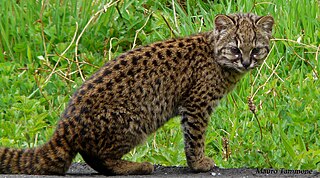
The kodkod, also called güiña, is the smallest felid species native to the Americas. It lives primarily in central and southern Chile, as well as marginally in adjoining areas of Argentina. Since 2002, it has been listed as Vulnerable on the IUCN Red List as the total population may be less than 10,000 mature individuals; it is threatened by persecution, and habitat loss and prey base.

Queulat National Park is a national park of Chile located in the Aysén del General Carlos Ibáñez del Campo Region. The park is bordered by the Cisnes River on the south side and is neighbor to Lago Rosselot National Reserve. It contains 1,541 km2 (595 sq mi) of glacier-capped mountains and virgin evergreen forests.
Irenomys tarsalis, also known as the Chilean climbing mouse, Chilean tree mouse, or long-footed irenomys, is a rodent found in Chile, from about 36° to 46°S, and in adjacent Argentina, mainly in forests. It is a large, long-tailed, soft-furred mouse characterized by grooved upper incisors and specialized molars with transverse ridges, divided by deep valleys, which are connected by a transverse ridge along the midline of the molars.

The ocellated tapaculo is a large bird found in the northern Andes in South America. It is a highly distinctive tapaculo; traditionally united with its closest relatives in the Rhinocryptidae, this family is paraphyletic with the Formicariidae (ground-antbirds) but instead of merging the tapaculos with the ground-antbird family, recent sources tend to split the antpittas from the Formicariidae.

The thorn-tailed rayadito is a species of bird in the family Furnariidae. It is found in temperate forests and subtropical dry shrubland south of 30°S. Some sources suggest it may formerly have occurred in the Falkland Islands. It remains the commonest and best-known native bird in temperate forests of Zona Austral and Zona Sur in Chile, often occurring at densities of well over one individual per hectare.
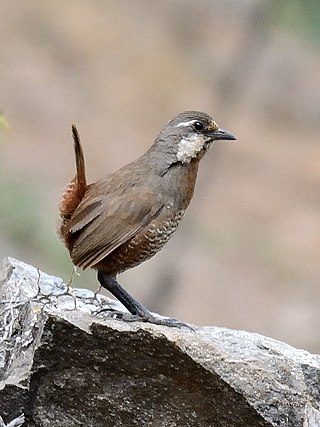
The moustached turca is a passerine bird which is endemic to Chile and belongs to the tapaculo family Rhinocryptidae. Common names of this species include "Turco" or "Turca". It is a terrestrial bird that burrows its nest on steep hillsides and uses flight for short distances. It is not threatened, yet it is unfortunately an understudied species of bird.

The white-crested elaenia is a species of bird in the family Tyrannidae, the tyrant flycatchers. It has several subspecies breeding across southern and western parts of South America. Southern birds migrate north in winter.
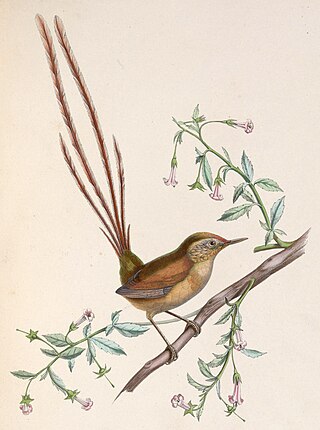
Des Murs's wiretail is a small passerine bird of southern South America which belongs to the ovenbird family Furnariidae. Molecular phylogenetics places it within the Synallaxinae and indicates that the genus diverged from the Leptasthenura about 14-15 million years ago.

The rusty-belted tapaculo is a species of suboscine passerine bird in the tapaculo family Rhinocryptidae. It is the only species placed in the genus Liosceles. It is found in Brazil, Bolivia, Colombia, Ecuador, and Peru.

The chestnut-throated huet-huet is a large passerine bird of the family Rhinocryptidae. At an average mass of 165 grams (5.8 oz), it is, with the related black-throated huet-huet, the largest rhinocryptid and the third-heaviest tracheophone suboscine behind the giant and great antpittas. It is a stockily-built bird, averaging 23 centimetres (9.1 in) in length with a predominantly dark brown plumage except for a dark red throat and a pale buff bar on its wind – lacking in the black-throated species. For many decades intense debate existed as to whether these two were one species or two, but molecular studies in the 1990s demonstrated that the two species had been separated since before the Patagonian Ice Sheet first formed in southern Chile.
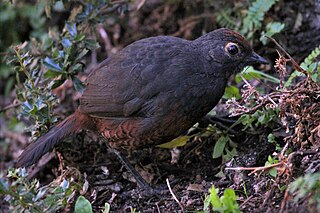
The black-throated huet-huetSpanish pronunciation:[wetwet], is a species of bird in the family Rhinocryptidae. It is found in southern/central Chile and adjacent western Argentina. Its natural habitat is temperate forest.
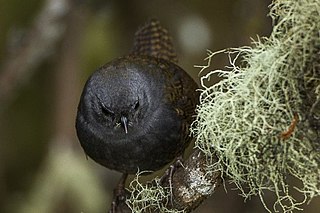
The Paramo tapaculo is a species of bird in the family Rhinocryptidae. It is found in the Andes of Ecuador and southern Colombia.
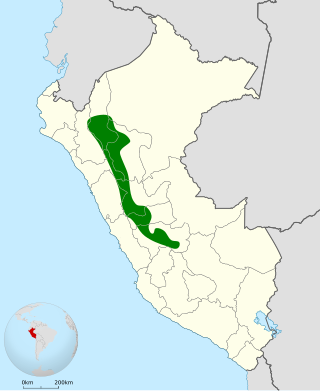
The rufous-vented tapaculo is a species of bird in the family Rhinocryptidae. It is endemic to Peru.

The dusky tapaculo is a species of bird in the family Rhinocryptidae. It is endemic to Chile.

The pale-bellied tapaculo, also known as the matorral tapaculo or rufous-rumped tapaculo, is a species of bird in the family Rhinocryptidae. It is found in Colombia and Venezuela.

The mouse-coloured tapaculo or Serra do Mar tapaculo is a species of bird in the family Rhinocryptidae. It is endemic to humid highland forests in southeastern Brazil, where it ranges from southwestern Espírito Santo to northeastern Rio Grande do Sul. Most of its range is in the Serra do Mar, but it also occurs further inland in Paraná and Santa Catarina. Until 2005, the Planalto tapaculo was included in the mouse-coloured tapaculo.

The Planalto tapaculo is a small passerine bird in family Rhinocryptidae. It is found in southeastern Brazil and extreme northeastern Argentina.

The rock tapaculo or Espinhaço tapaculo is a species of bird in the family Rhinocryptidae. It is endemic to altitudes of 900–2,100 metres (3,000–6,900 ft) in the central and southern Espinhaço Mountains, and the Mantiqueira Mountains in Minas Gerais, Brazil, though it may also occur in adjacent parts of Rio de Janeiro and São Paulo. It is found in shrubby and grassy habitats in rocky regions, and in elfin and cloud forest. It closely resembles the Diamantina tapaculo and Planalto tapaculo in appearance and voice.

Isla San Pedro is a privately owned island located off the southeastern shore of Chiloé Island within the commune of Quellón, in Southern Chile.





















